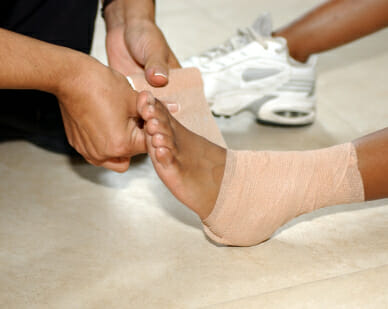As a former competitive athlete, I sustained multiple ankle sprains. My personal experience and my knowledge acquired through my profession puts me in a good position to give an expert advice on ankle sprain. Ankle injuries has become one of the most common conditions we treat in our clinic.
Several factors contributed to such an occurrence. One of them is an increase in sports activities and sports participation. Ankle sprains in general by far the most common sports related injury.
In fact there are more than 30,000 ankle sprains in the US per day. Most of those sprains are mild GradeI type that will go away in 2-4 weeks. I am concerned about more severe sprains, approximately 25% of injured persons will go on to develop chronic ankle instability. Surgery may be appropriate in those cases.
There are several risk factors for developing ankle sprains. Probably the biggest factor is a history of a previous sprain. In an ankle that has been already sprained the ligaments are less taut, resulting in the ankle feeling less stable. A typical mechanism of an injury is "rolling" on the outer surface of the foot and causing quick and sudden stretch to the lateral ligaments. Other risk groups are people with stiff ankles, athletes in contact sports. Women are 25% more likely to sprain their ankle than man.
In more severe cases, Grade III sprains, the ligaments are completely torn. In some cases surgery is required. The person may have difficulties putting weight through their ankle, and in many instances this condition makes performing recreational activities impossible. It may lead to a development of premature arthritis, since the normal distribution of forces acting on the joint are disrupted, the articular cartilage wears out much faster.
MRI examination is the most useful tool in determining the degree of ligament injury.
For GradeI and GradeII sprains Physical Therapy is most helpful. The therapist cannot make your ligaments tighter, but he can teach you specific exercises to improve muscular support around the ankle joint, thus providing dynamic stability.
Physical Therapy for all ankle sprains will focus on balance training and proprioceptive control, that is an awareness of your ankle joint position in space.
Our goal is to decrease your chances of re-injury and return to your fun activities.
We can help. Get started by filling out the form below.
Fill out my online form.
